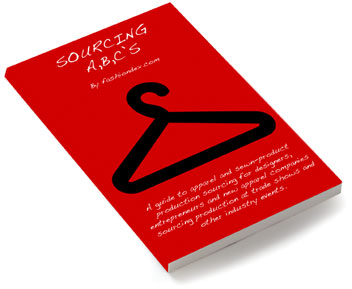
After you discuss what styles, quantities, and services you need to be produced, a factory may advise a price per piece for production. The price will be based on a particular minimum order quantity (MOQ). You will wonder if the price is a fair price, as well as what a typical price for an item such as yours should be.
To calculate the price you will approximately pay from a factory, you must work backward. For instance: If you want to manufacture a new design of children’s swimwear, you should look online and visit stores to research other children’s swimwear lines. Take a look at a similar-type swimsuit. Perhaps you find one selling for $40.00 at retail, that seems to be the same target customer, then you know you need to be in the same price range to be competitive. To figure out what that other manufacturer paid for production (including fabric) to sell the item at $40.00 retail, first know that a retail store buys an item for about half it’s selling price. The retailer marks up the price by doubling the wholesale cost. This is called a keystone mark-up. They may also use a specialty-store mark-up of 120 to 125%. Either way, the retailer or online store has purchased that swimsuit from the branded manufacturer for approximately $18.00 to $20.00. For a manufacturer to sell a garment to a retailer at $18.00 to $20.00, they must get it produced for roughly half the price, or a bit more, because there is approximately a 45-65% mark-up from cost to the wholesale selling price. Therefore, the other swimsuit manufacturer paid in the range of $9.00 to $11.00 in costs to sell the swimsuit at $18.00 (if they are selling boutiques and specialty stores) or they paid $10-12.00 to sell it at $20.00 wholesale (if they are selling to department and chain stores). Working backward like this, we learn that on average a manufacturer should expect to pay from $9.00 to $12.00 for that piece of swimwear. This averages $10.50 per piece. This price includes fabric cost, trimming costs, any specialty processes/treatments and the production.
Upon knowing the price you that you hope the garment will sell at retail, you can work backward and figure out what you need to pay for a similar garment. This information helps you qualify factories. If a factory tells you the swimsuit will cost $4.00 including fabric, then you can guess that the quality will not be what you are looking for, or if they say it is $16.00, then you will want to source another factory who can work at the price you need. This is yet another reason why it is imperative to do your homework and check out the brick-and-mortar and online retail scenes. By seeing what competitors sell at, you can learn how much they probably pay for production.
On another note, if you are sourcing the fabric yourself from fabric mills, and decide to place the fabric order yourself, and your swimsuit takes 0.5 yards of a fabric costing 8.00/yard, then your fabric cost is $4.00 per garment, therefore you have $6.50 remaining to spend on production, including any needed trims, etc. Again, knowing what services you wish the factory to provide affects your production price quotations.